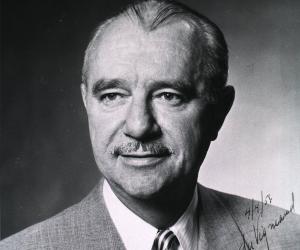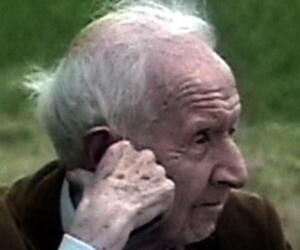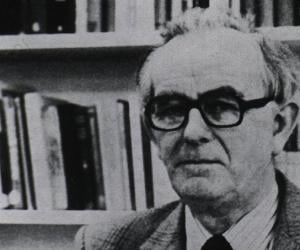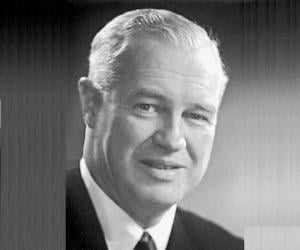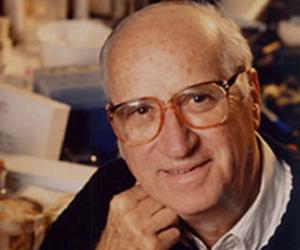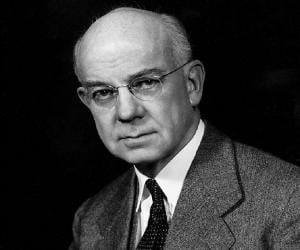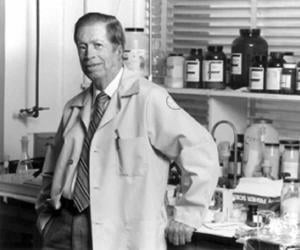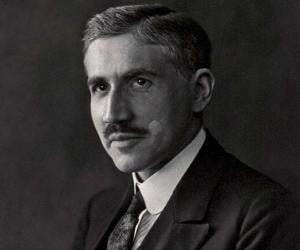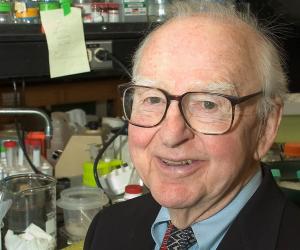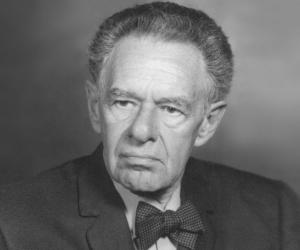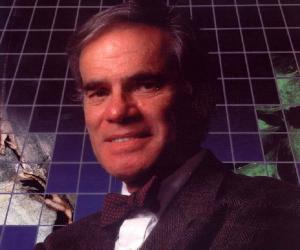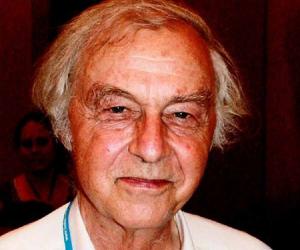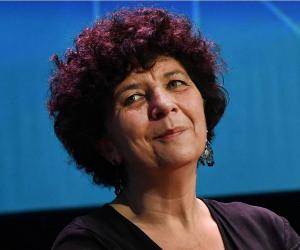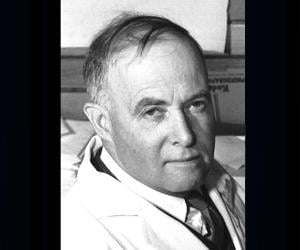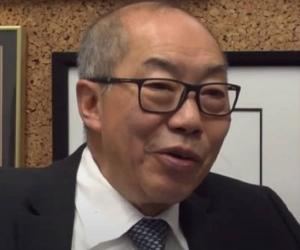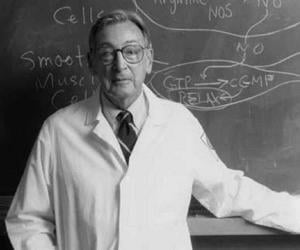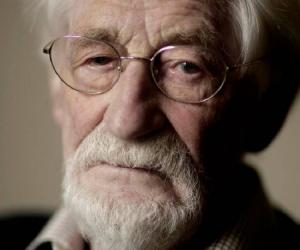Quick Facts
Died At Age: 77
Family:
Spouse/Ex-: Zella Zon
father: Alfred J. du Vigneaud
mother: Mary Theresa
children: Jr., Marilyn Renee Brown, Vincent
Biochemists American Men
Died on: December 11, 1978
place of death: Ithaca, New York, USA
City: Chicago, Illinois
U.S. State: Illinois
More Facts
education: University of Rochester
awards: Albert Lasker Award for Basic Medical Research (1948)
Nobel Prize for Chemistry (1955)
Willard Gibbs Award (1956)
Childhood & Early Life
He was born on May 18, 1901, in Chicago, Illinois, to Alfred J. du Vigneaud and his wife, Mary Theresa. His father was an inventor and a machine designer.
In 1918 he completed his high school education from ‘Carl Schurz High School’ in Chicago, Illinois.
He studied at the ‘University of Illinois’ under the guidance of Professor C.S. Marvel and completed his BS in Chemistry in 1923 followed by MS in Chemistry in 1924.
Sometime during 1924 to 1925 he remained a scholar at the ‘University of Pennsylvania’.
In 1925, Vigneaud enrolled at the ‘University of Rochester’ to pursue his postgraduate doctorate studies and began his work under the guidance of Professor John R. Murlin. He earned his Ph.D in Biochemistry in 1927 submitting his thesis titled ‘The Sulfur in Insulin’ that showed cystine as the source of disulfide in the peptide hormone insulin.
In 1927 he commenced his post doctoral research on insulin along with distinguished American biochemist and pharmacologist John J. Abel at the ‘John Hopkins University’ in Baltimore. He demonstrated insulin as a protein, thus validating that proteins could be hormones.
During 1928 to 1929 he visited Europe as a ‘National Research Council Fellow’ and joined the ‘Kaiser Wilhelm Institute for Leather Research’ in Dresden, Germany, where he continued with his post doctoral studies along with Jewish-German biochemist Max Bergmann.
Thereafter he remained a scholar at the ‘University College London’ and at the ‘University of Edinburgh’.
Career
He returned to Illinois in 1929 and joined the ‘University of Illinois’ at Urbana-Champaign as a teacher of Physiological Chemistry, a position he held till 1932. While serving at the University, in 1930 he joined the professional fraternity ‘Alpha Chi Sigma’ (ΑΧΣ), which specializes in the field of chemistry.
Thereafter he served the ‘George Washington University Medical School’ from 1932 to 1938 as a Professor of Biochemistry as well as the Chairman of the department.
He then moved to New York City where he was appointed by ‘Cornell University Medical College’ as Professor and Head of the Biochemistry Department in 1938. He served the university for almost three decades until 1967.
It is in the ‘Cornell University Medical College’ that he conducted many of his important research works, mostly focussing on the sulphur-containing compounds of biochemical significance, including his ‘Nobel Prize winning research on oxytocin and vasopressin. He also earned reputation for his work on biotin, insulin, penicillin and transmethylation.
Sometime in the late 1930s, the chemical structure of the peptide hormone insulin was ascertained by him along with his team at Cornell.
In 1940 Vigneaud along with his collaborators discovered that coenzyme R and vitamin H are identical to the sulfur-bearing vitamin biotin, the structure of which was determined by them in 1941.
During the 1940s he worked and became successful in isolating and analysing the chemical structures of two of the neurohormones namely oxytocin and vasopressin that are considered to be associated with the posterior pituitary. Later in 1953 he achieved another success by becoming the first person to synthesize a protein hormone, oxytocin. In 1954 he was able to synthesize another hormone, vasopressin.
Another path-breaking success was achieved by him and his collaborators in 1946 when they synthesized penicillin.
In 1951 he became the President of the ‘American Society for Biochemistry and Molecular Biology’.
He authored a book on oxytocin and vasopressin titled ‘A Trail of Research in Sulphur Chemistry and Metabolism and Related Field’, which was published by the ‘Cornell University Press’ in 1952.
In 1955 he was conferred honorary doctorates by the ‘New York University’ and the ‘Yale University’. Later in 1960 this honor was bestowed upon him by the ‘University of Illinois’.
Post his retirement from ‘Cornell University Medical College’ he remained Professor of Chemistry at the ‘Cornell University’ in Ithaca, New York from 1967 to 1975.
He remained member of several Societies including the ‘American Philosophical Society’ (1944) and the ‘National Academy of Sciences’ (1944). He also served as a Foreign Member of the ‘Royal Society of Sciences in Uppsala’ (1950), the ‘Royal Society of Edinburgh’ (1955) and the ‘Royal Institution of Great Britain’ (1959).
Vigneaud also served as a member of the Board of Trustees of the ‘National Institute of Arthritis and Metabolic Diseases’ and the ‘Rockefeller Institute’.
Awards & Achievements
He was the recipient of the ‘Nobel Prize in Chemistry’ in 1955.
Personal Life & Legacy
On June 12, 1924, he married Zella Zon Ford, a chemistry teacher.
Their son Vincent, Jr. was born in 1933 and daughter Marilyn Renee Brown was born in 1935. Both their children went on to become physicians.
He suffered a stroke in 1974 that ended his academic career.
On December 11, 1978, he passed away in New York, USA at the age of 77.
See more:


